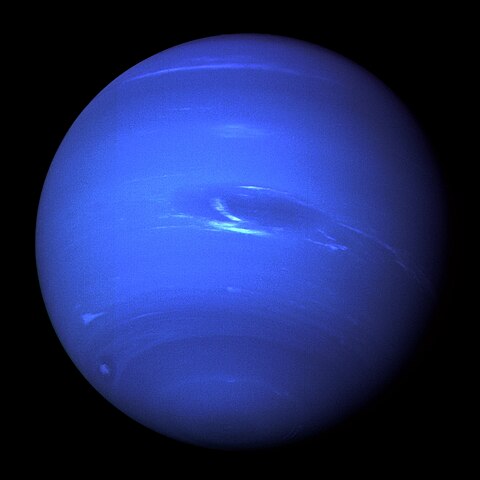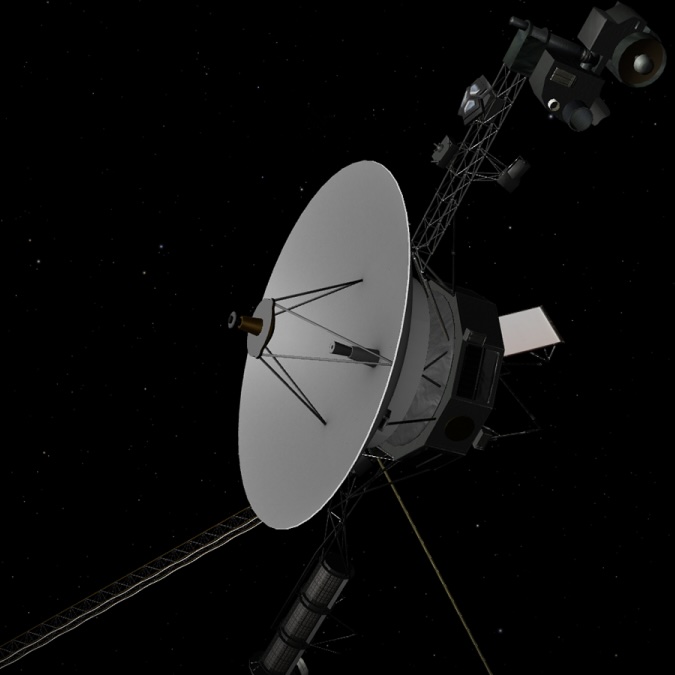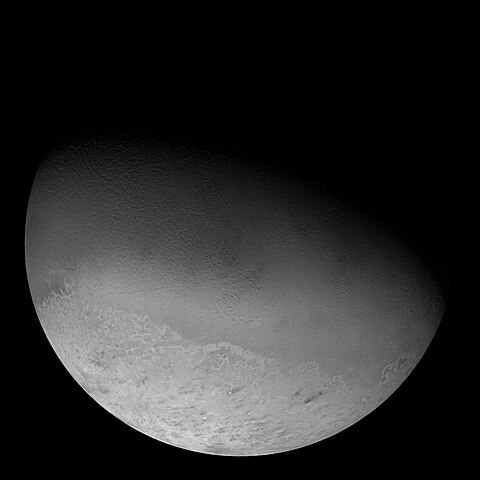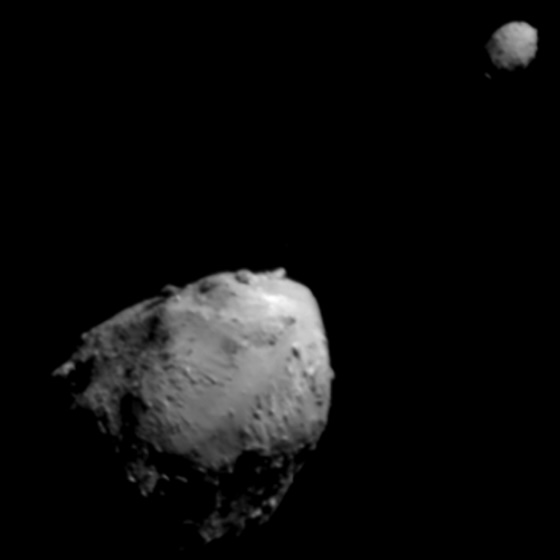1 day / second
0.5 AU
Galatea
Moon of Neptune
A small inner moon of Neptune discovered by Voyager 2 in 1989 that orbits within the planet's ring system and helps shepherd the Adams ring.
Key Facts
learn more | Wikipedia |
mass | 2.5000e+18 kg |
radius | 97 km |
semi-major axis | 61,952.57 km |
eccentricity | 0 |
inclination | 28.372º |
longitude of the ascending node | 0º |
argument of periapsis | 0º |
orbital period | 10.294 hours |
surface gravity | 0.002 g |
discovery date | July 28, 1989 |
discovered by | Stephen P. Synnott using Voyager 2 imagery |
name origins | Named after Galatea, a sea nymph from Greek mythology |
dimensions | 88km radius |
albedo | 0.08 |
density | Low density suggesting icy composition |
Parent Planet
Neptune
The eighth and most distant planet, Neptune is a cold, windy ice giant with a vivid blue color, powerful storms, supersonic winds reaching 1,200 mph, and a collection of 14 known moons including the geologically active Triton.
Spacecraft Visits
Voyager 2
Flyby
Launched in 1977, visited in 1989
During its Neptune flyby on August 25, 1989, Voyager 2 discovered and photographed Galatea, capturing images that revealed the small, irregular moon orbiting close to Neptune's ring system.











